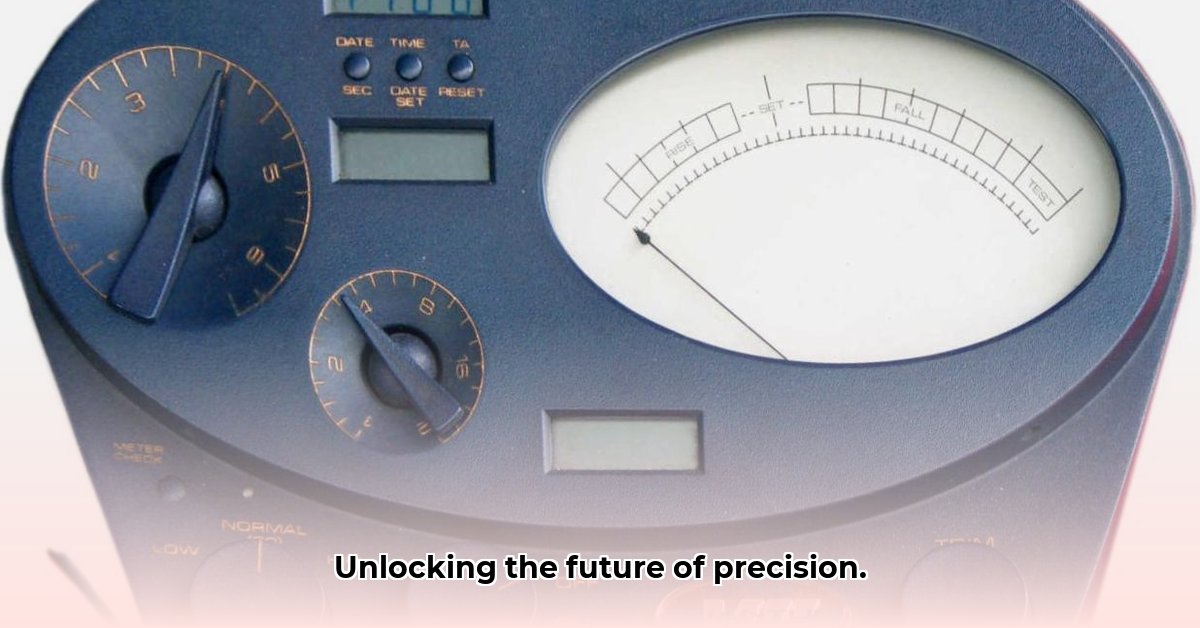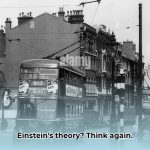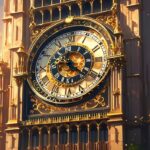“`markdown
High-Tech Time Measurement: Revolutionizing Precision Now
Imagine a world where even the tiniest fraction of a second holds immense importance – this is the reality that high-precision timekeeping delivers. From secure online banking to autonomous vehicle navigation, incredibly accurate time serves as the bedrock. Let’s embark on an exploration of cutting-edge time-measuring methods, utilizing advanced atomic, quantum physics and optical clocks, including how to maximize their effectiveness and a future outlook on timekeeping that keeps you ahead of the curve. For a historical perspective on timekeeping, check out this sun clock.
Advancements in Precision Timing: Atomic, Quantum, and Optical Clocks
The pursuit of exceptionally precise timekeeping is redefining technological boundaries. We are delving into the realm of milliseconds and even smaller time increments. This relentless push for accuracy is spearheading remarkable innovations in atomic, quantum, and optical clocks – influencing sectors from finance to space exploration. But what constitutes “accurate enough”? The answer depends on the specific application. What are the innovative aspects of these clocks?
Atomic Clocks: The Bedrock of Modern Accuracy
Currently, atomic clocks reign as the gold standard for accuracy. Their precision makes them crucial for systems that demand perfect synchronization, like GPS navigation. Atomic clocks, relying on consistent atomic vibrations to measure time, underpin critical infrastructure and scientific progress. These clocks leverage the predictable and stable oscillations of atoms, typically cesium or rubidium, to measure time with incredible accuracy. Global navigation systems, telecommunications networks, and scientific research depend heavily on these precise timekeepers. What makes atomic clocks so reliable? Their reliance on fundamental, unchanging physical properties ensures their unparalleled stability.
Quantum and Optical Clocks: The Next Frontier
Scientists are continually pushing for improvement, and quantum and optical clocks represent the next echelon of accuracy. These revolutionary timepieces significantly surpass even the finest atomic clocks in precision. Quantum clocks harness the principles of quantum mechanics, utilizing phenomena like superposition and entanglement to achieve unprecedented accuracy. Optical clocks, on the other hand, operate at much higher frequencies than atomic clocks, allowing for even finer time divisions. However, these sophisticated clocks currently reside primarily in research labs due to their complexities, costs, and scalability limitations. Can quantum and optical clocks become more accessible? Ongoing research seeks to simplify these technologies and reduce their dependence on specialized environments.
Challenges and Opportunities in Advanced Timekeeping
Several key obstacles impede the widespread adoption of advanced timekeeping technologies. Size constraints and high power demands pose a challenge. Quantum and optical clocks often require bulky equipment and significant energy consumption, making them unsuitable for portable applications. Maintaining perfect synchronization, vital for practical use, requires robust systems like the Network Time Protocol (NTP) and protection against cyber threats. The high costs must also decrease significantly. The price of quantum and optical clocks can be prohibitive for many applications. Despite these challenges, the enormous potential benefits are motivating researchers and engineers to find creative solutions. How can we overcome the challenges to adopt advanced timekeeping technologies? Innovations in materials science, miniaturization techniques, and energy-efficient designs hold promise for making these advanced timekeeping technologies more accessible and practical.
Industry Impact: The Pervasive Influence of Precise Timekeeping
Enhanced timekeeping precision impacts numerous industries:
-
Finance: In high-speed online finance and trading, even minute timing errors can trigger significant financial consequences. Precise timekeeping helps prevent fraud and secures transaction integrity, protecting billions of dollars daily. High-frequency trading algorithms rely on precise timestamps to execute trades at optimal moments, and even millisecond discrepancies can lead to substantial financial losses. Precise timestamps are crucial for regulatory compliance and preventing financial fraud.
-
Space Exploration: Relativistic effects, stemming from Einstein’s theory of relativity, affect time perception over vast distances. Extremely precise clocks are essential for spacecraft navigation and communication, especially for missions into deep space. As spacecraft travel at high speeds and experience varying gravitational fields, time dilation effects become significant, requiring extremely accurate timekeeping to ensure precise navigation. Errors in trajectory calculation to other planets can lead probes to miss their marks by thousands of miles.
-
Scientific Research: Accurate timing is critical in many scientific experiments, ensuring data integrity and enabling researchers to draw accurate conclusions in fields like physics, biology, and chemistry. From particle physics experiments to genome sequencing, precise timing is essential for capturing accurate data and validating research findings. These improvements can lead to more precise data and groundbreaking discoveries. How will precise timekeeping improve data accuracy and future breakthroughs?
Future Outlook: A Roadmap to High-Tech Time Measurement
The future of high-tech timekeeping holds immense potential. Below is a summary of stakeholder objectives:
| Stakeholder | Short-Term Goals (0-1 year) | Long-Term Goals (3-5 years) |
|---|---|---|
| Technology Developers | Miniaturize quantum/optical clocks; reduce production costs; enhance NTP security and reliability. | Develop standardized interfaces for high-precision clocks; further miniaturize quantum clocks; improve power efficiency. |
| Financial Institutions | Improve NTP server security; guarantee data integrity through robust systems and protocols. | Implement quantum-resistant cryptography; invest in advanced security measures to prevent timing attacks. |
| Space Agencies | Improve GPS accuracy; develop more effective methods for correcting for relativistic time differences. | Develop quantum clock-based navigation systems for deep space missions; create networks of synchronized clocks across space. |
| Scientific Researchers | Utilize existing quantum/optical clocks for groundbreaking experiments; improve experimental design. | Develop quantum sensors which are highly sensitive to gravitational fields and other physical phenomena. |
| Governments/Regulators | Standardize timekeeping protocols across sectors; create clear guidelines for data security. | Develop comprehensive regulations for high-precision timing in critical infrastructure and other sensitive settings. |
Conclusion: The Crucial Essence of Time
High-tech time measurement transcends simply improving time telling; it unlocks unprecedented possibilities. From securing financial systems to facilitating deep space exploration, advances in timekeeping profoundly impact our world. The precision journey continues, significantly impacting various disciplines. The work is ongoing, promising even more thrilling advancements.
Comparative Analysis: Quantum vs Optical Clocks for Long-Term Stability
Key Takeaways:
- Optical atomic clocks outperform cesium standards in accuracy and stability, reaching fractional frequency uncertainties of parts in 1018 (one quintillionth).
- Multiple atomic species (aluminum, strontium, ytterbium) exhibit promise across different clock designs, offering varied advantages.
- Comparing clocks across distances poses challenges, as satellite and fiber-optic links introduce uncertainties.
- Advanced techniques like Ramsey interferometry (a method for precise measurement of transition frequencies) and “magic wavelengths” (specific wavelengths that minimize external effects on atomic transitions) enhance clock precision.
- International collaboration is essential for validating results and establishing global time standards to promote reliability.
The Quest for Perfect Time: Optical and Quantum Clocks
What if you needed a clock accurate enough to maintain precision over the universe’s lifespan? We are entering this realm with optical and quantum clocks. Both offer unparalleled timekeeping, but comparing their long-term stability is complex. How do these innovative designs redefine timekeeping measurement? These clocks achieve unprecedented precision by exploiting fundamental physics principles, such as quantum superposition and atomic energy level transitions.
Optical Atomic Clocks: Leading the Precision Race
Optical clocks use narrow electron transitions within atoms, enabling time measurements more accurate than cesium fountain clocks. Fractional frequency uncertainties reach parts in 1018, with atoms like strontium and ytterbium showing promise. Atoms like strontium, ytterbium, and mercury are commonly used, each offering unique advantages in terms of transition frequencies and sensitivity to environmental factors. But what about long-term stability? Environmental factors and imperfections can cause drifts. Factors such as temperature fluctuations, magnetic fields, and laser instability can all contribute to frequency drifts over time.
Quantum Clocks: A New Paradigm
Quantum clocks use quantum mechanics to measure time. Utilizing quantum systems like trapped ions or neutral atoms can potentially be more stable than optical clocks. Quantum entanglement, superposition, and squeezed states are harnessed to enhance the precision and stability of these clocks. However, their full potential remains unrealized, and many hurdles block direct comparison of long-term stability. Challenges include maintaining quantum coherence over extended periods, minimizing the effects of decoherence, and developing robust error correction schemes.
Challenges in Comparing Timing Technologies: Precise Methodologies
Comparing quantum vs optical clocks for long-term stability involves meticulous measurement and analysis; the challenge is comparing outputs. Synchronizing distant, accurate clocks requires precise signal transfers via satellites or fiber optic cables, introducing uncertainties. The quality of the signal transfer medium, atmospheric conditions, and the stability of the transfer equipment can all contribute to uncertainties. Uncertainty in the transfer process can exceed the clock’s inherent uncertainty.
To resolve this, researchers are utilizing data analysis and error correction methods. Statistical filtering, Kalman filtering, and advanced signal processing techniques are employed to mitigate the effects of noise and interference. International collaborations coordinate clock comparisons across multiple countries and continents which validates uncertainty budgets and refines techniques for establishing a global standard. These collaborations involve sharing data, comparing methodologies, and cross-validating results to ensure the accuracy and reliability of timekeeping standards.
Actionable Steps for the Future
What does the future hold?
- Refining measurement techniques: Minimizing systematic errors within both clock types. Careful calibration, precise control of environmental conditions, and the use of advanced measurement techniques are essential.
- Optimizing frequency transfer: Developing precise methods for transferring clock signals between locations is critical. Advancements in fiber optic technology, satellite communication, and free-space optical links are paving the way for more accurate and reliable
- Unveiling ancient roman gladiator helmets design secrets that decided victory or death - August 14, 2025
- Unlocking ancient roman domes: Innovation secrets for modern builds, like the Pantheon - August 14, 2025
- Unlock Ancient Secrets: Ancient Roman Money, Empire’s Rise, a Collector’s Guide - August 14, 2025
















